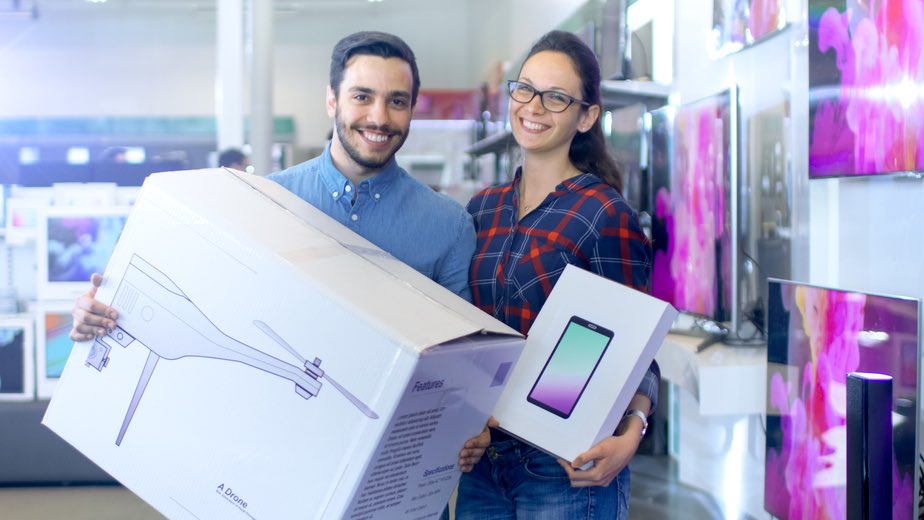8 Things to Consider Before Buying a Drone
Owning a drone can either be one of your most exciting experiences, or it can turn to an extremely head scratching waste of money. What it is depends on your ability to buy the right drone. Here are a few things to consider before you whip your wallet and splurge on one.
1. How Much is Your Budget?
In a perfect world, you can just walk into a store, pick the best drone from the shelf, go outside and enjoy your day. But that’s not always the case, is it?
For most of us, our choice of drone is restricted by our budget. Though their price has gone down compared to two years ago, top of the line drones still cost thousands of dollars. If you are buying one to use for your job, just like professional videographers who constantly need aerial coverage, spending money on them is a wise investment. But that cannot be said about hobbyists who only pick up their drones in the weekend.
2. After Sales Support
As with all electronic gadgets, your drone will breakdown, either from ordinary use or from accidents. That is why it’s very important to buy them from suppliers with a good reputation and aftersales support. Check if they also sell spare parts and make repairs if necessary. In cases where the supplier does not sell replacement parts, ask them if those parts area available from other stores near you. Most common brands use universal parts and are good choices when purchasing your first drone.
3. Outdoor or Indoor?
Size does matter when it comes to purchasing drones, especially if you plan to fly them over mountains and across rivers. Typically drones that are designed for outdoor use are larger and more durable because they need to withstand harsher environments and have to carry larger batteries. Indoor drones on the other hand, are smaller and cheaper. Occasionally, you can use them outdoors but only when the weather is fine and wind is barely noticeable.
4. Your Technical Experience
Do you like tinkering with things? If you do, then buying a do-it-yourself (DIY) drone is the way to go. For one, it saves you a lot of money. But more than cheaper cost, the thrill of assembling your own drone from parts is worth the extra effort.
Of course, if you hate the thought of fixing broken things, ready to fly (RTF) drones are more suited to you. They might be a little more expensive than the DIY ones, but at least, you won’t be spending tremendous amount of time in assembling your drone before you can see it fly.
5. What Type to Buy
There are ordinary drones made from plastics, and there are the high end ones made from fiberglass and carbon. Fiberglass drones are more expensive, and therefore, recommended for enthusiasts whose budget is not an issue. They are lighter and more durable too. Plastic drones are not as tough but at least they are more forgiving to your wallet.
6. Flying Time
Drones are not airplanes that can stay in the air for hours on end. It’s because drones don’t have jet engines that feed on liquid fuel. Because of their small size, all they can take with them are small batteries to power their propellers. Thus, their time in the air is limited.
Common flight time for ordinary drones is from 15 to 25 minutes. Some really cheap ones can only stay in the air for 5 minutes at the most, so you might want to check the manual before you buy one. You can lengthen your flight time by buying extra batteries and changing them between flights.
7. Range
How far you can fly your drone without losing control is very important, especially if you plan to use it for photography.
Top of the line drones have ranges of 5 to 7 kilometers, but they also cost thousands of dollars. With low end drones, you will be lucky to have effective range of 30 to 50 meters. For hobbyists who only want to see their toy fly above their heads, having short range is not a problem. But for professionals who rely on drones for their work, having the ability to fly them farther is important.
8. Camera
One of the most common uses for drones today is for aerial photography. If you are going by this route, make sure that you buy a drone with a decent camera. Also check for some advanced features such as real time photo and image transmission and compatibility with your phone or tablet. These things are important if you don’t want having trouble transferring your data after each flight. Also, real time transmission lessens the chance of losing your video and images in case the drone crashes.
Be wise so you can enjoy your time flying your new toy. Consider these tips to avoid costly mistakes. You will also benefit from asking friends who have already purchased their own. Just because you have money to spend does not mean that you have to buy the first drone that you come across.

